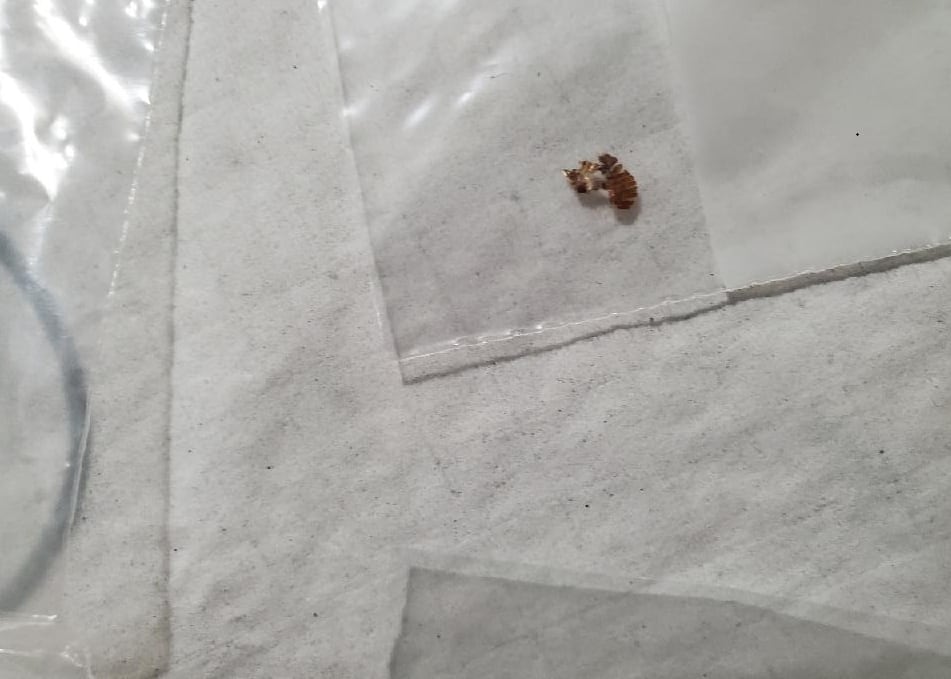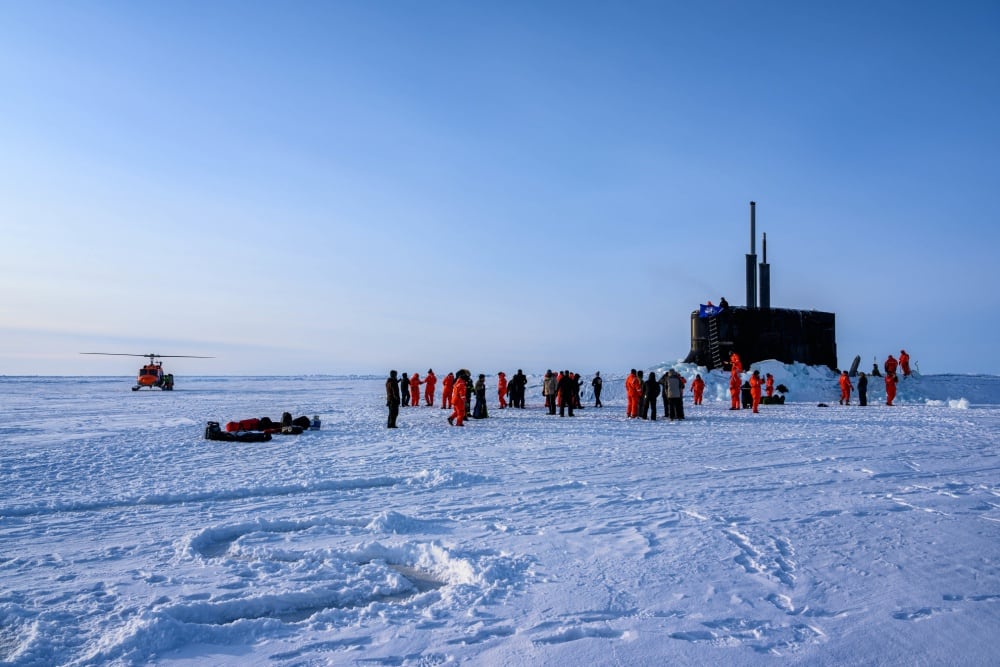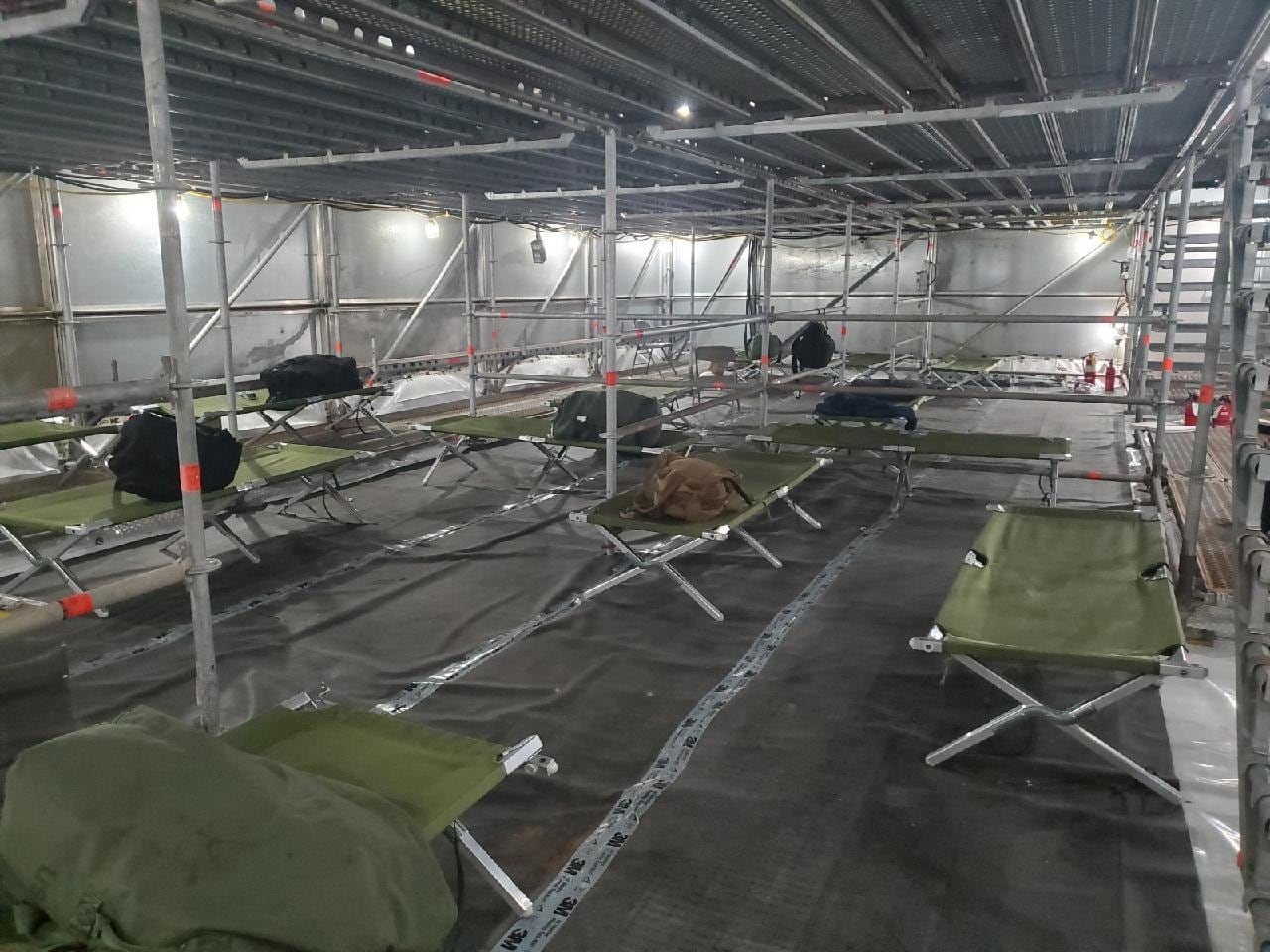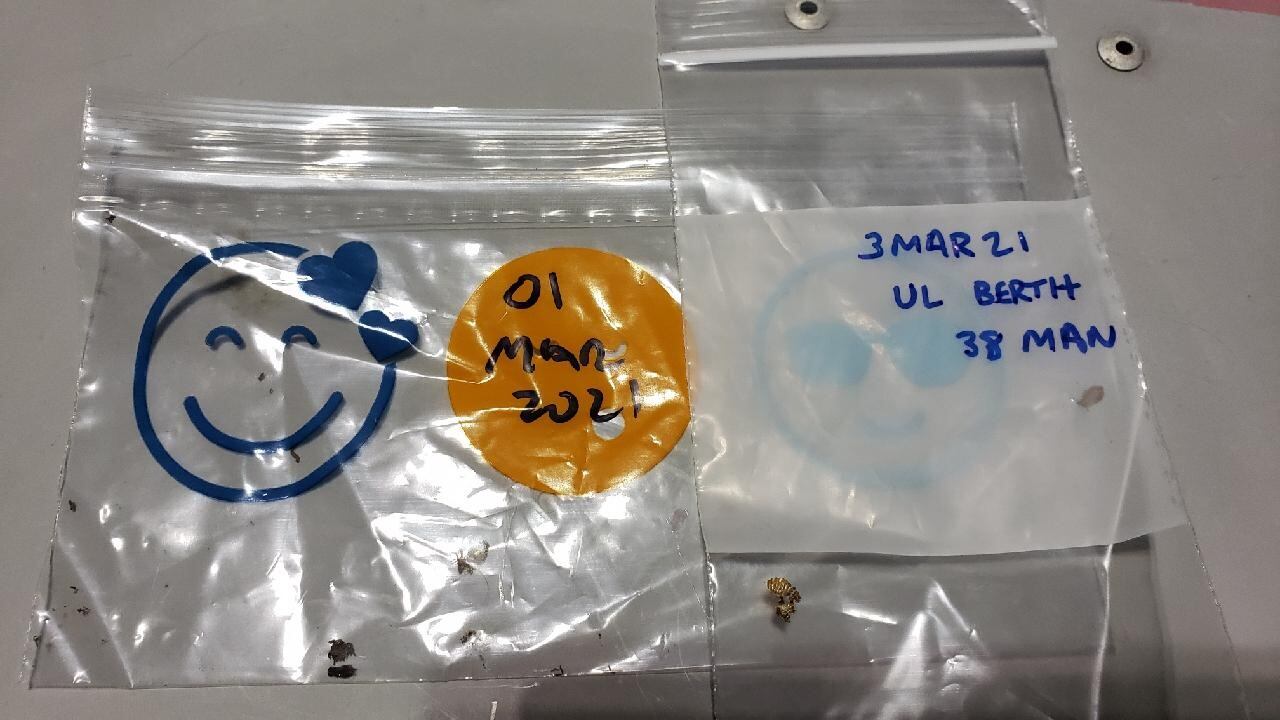The crew of the fast-attack submarine Connecticut has been subjected to a bedbug infestation in their racks, and sailors assigned to the sub allege that the boat’s command has been slow to fix the problem.
The infestation issue began while the sub was taking part in ICEX 2020 in the Arctic Ocean in March 2020 and continued during a deployment last year, according to a Connecticut petty officer who asked to remain anonymous for fear of retribution.
“We’ve had bedbugs for a year now,” the petty officer said. “Sailors complained about getting bitten in the racks.”
“People are terrified of getting bit,” he added.
While sailors allege they battled bedbugs for most of 2020, Cmdr. Cynthia Fields, a Naval Submarine Forces Pacific spokeswoman, said the boat’s command first reported the issue in December, and that the “physical presence” of bedbugs wasn’t found onboard until Feb. 19.
“Navy criteria for treating submarines or ships requires physical presence of bedbugs to establish existence,” she said.
The petty officer said the command initially didn’t believe sailor bedbug claims because “we didn’t have proof.”
Daily inspections have commenced, all berthing spaces have been searched and mattresses have been inspected, Fields said.
Linens and privacy curtains have been laundered or replaced, and Navy entomologists have come onboard to monitor efforts that include “deadly countermeasures,” she said.
“The Navy takes the safety and health of its sailors very seriously,” Fields said.

But according to two petty officers assigned to Connecticut, the boat has been dealing with bedbugs since at least the time of the ICEX event in March 2020.
It got so bad that some crew members took to sleeping in chairs or on the floor of the crew’s mess to escape the elusive bloodsuckers during their deployment, said one petty officer.
“People were getting eaten alive in their racks,” said the petty officer, who alleges that the infestation spread to several enlisted berthing spaces and at least one officer state room.
“The best way to put it would probably be ‘employee abuse,’ but that’s not really a thing in the Navy, I guess,” another petty officer who also requested anonymity for fear of retribution said of leadership’s response to the problem.
One petty officer said he has contacted the Naval Inspector General and reached out to Navy Times because leadership hasn’t adequately addressed the issue, and sub life is stressful enough without bedbugs and the loss of sleep the insects brought to the crew.
Sailors already share racks in the sub’s close quarters, and fatigue takes on added consequence when underway in a metal tube far below the surface, he noted.
“If someone’s sleep deprived because they’re in the rack getting eaten alive by bedbugs, he could fall asleep at (the controls) and run us into an underwater mountain,” the petty officer said.
The petty officer said he also worries that fellow crew members will take bedbugs home to their spouses and kids.
“I don’t’ want them to take bedbugs home,” he said. “They have to pay for fumigators and their families will suffer.”

Fields, the SUBPAC spokeswoman, said the command “acted swiftly” when reports of bedbugs were first made in December.
“Inspections by the ship’s Corpsman did not find any of the classic indications of bedbugs, and were backed up by inspection from Preventative Medicine Technicians on Dec. 21,” she said. “Despite follow on inspections by certified inspectors that found no evidence of bedbugs, the command continued to pursue resolution.”
According to one petty officer who alleges that bedbugs were an issue on the sub for most of 2020, the command being unable to mitigate the bedbugs during deployment was understandable given the limited resources while underway, but leadership also didn’t seem to believe the crew when it came to the infestation until sailors caught a few of them.
bedbugs are tiny and tenacious creatures that feed off human blood and are notoriously hard to get rid of.
Their bites on sleeping humans can produce itchy welts, and they get their blood by piercing the skin with an elongated beak, according to the University of Kentucky’s Entomology Department.
“Engorgement takes about three to 10 minutes, but because the bite is painless, people seldom realize they are being bitten,” according to the university.
When the boat returned to its Washington state home port in December, sailors say the command’s responses didn’t fix the problem.
One solution was to steam the racks, so as to hopefully kill the bedbugs, but that didn’t work, sailors said.
The University of Kentucky notes that steaming alone often will not sufficiently penetrate the fabrics and other materials where bedbugs reside.
“Our steaming efforts throughout a monthlong stand-down proved to be fruitless,” the petty officer said.
Another petty officer said, “it caused the bedbugs to spread around the boat.”
Sailors attempted to tape up the walls and caulk cracks, but the arrangement of racks made it impossible to completely seal up any entry or exit points for the bedbugs.
The creatures can squeeze through openings as wide as a toothpick, according to the University of Kentucky.
Mattresses were removed and sanitized, one petty officer said, but the bedbugs returned.
“Our senior leadership said, ‘if we clean and sanitize all these, and someone points out bedbugs, they are f*cking lying,” a petty officer alleged.
The petty officers also allege that the command is forcing sailors to return to sleeping in the racks this week during training, when the entire sub’s crew will be onboard.
“They’re using us as live bait…to see if (the bedbugs) are still there,” one petty officer said. “The upper chain of command isn’t going to sleep in those racks. They’re going to make the lower enlisted do it.”
“Tonight and tomorrow, we are lawfully ordered to sleep in a known infested berthing area in order to record data that’s already been recorded,” another petty officer said Monday night.
In response to Navy Times questions about allegations that sailors are being forced back into infested berthing spaces, Fields said that Navy entomologists “have employed authorized countermeasures, and certify that all feasible measures have been taken to control bedbugs.”
“After two applications of Navy approved pesticide sprays, and application of a long-acting diatomaceous dust...entomologists recommended repopulation of berthing,” she said. “All appropriate countermeasures have been taken with plans firmly in place to address further breakouts underway if they occur.”
One petty officer said that sub life and the operations tempo already stress Connecticut’s crew enough, and that morale is on the floor due to the bedbugs and a perceived lack of help.
“They treat people like parts, and parts like people,” the petty officer said.
“The crew is tired from constant underways, a constant hurry-up-and-push mentality that’s just been going on for years on end,” another petty officer said.
To give crews a non-infested place to sleep on their duty days while in home port, the command set up a temporary building on the pier, the petty officer said, but the “bunch of stanchions with a tarp set over the top and metal walls with cots” wasn’t comfortable for the sailors, so some slept in chairs, the duty van or in the mess.
“Some people were sleeping on metal diamond decking because they didn’t want to sleep in the racks,” he said.

One petty officer also wonders why the command didn’t consider other pierside berthing options for duty sections, such as trailers, a barge or barracks.
“The one they chose was a makeshift building made out of stanchions and tape and World War II-era cots,” he said. “There’s not nearly enough racks for an entire duty section, so people have also put up hammocks to sleep.”
Asked about that pier berthing, Fields said that “approved berthing has been and will continue to be provided to Connecticut sailors, including pier side berthing for duty personnel while (Navy officials) and the ships Corpsman addressed crew concerns.”
Correction: an earlier version of this article misstated the command of Cmdr. Cynthia Fields. She is a spokeswoman for Naval Submarine Forces Pacific.
Geoff is the managing editor of Military Times, but he still loves writing stories. He covered Iraq and Afghanistan extensively and was a reporter at the Chicago Tribune. He welcomes any and all kinds of tips at geoffz@militarytimes.com.





